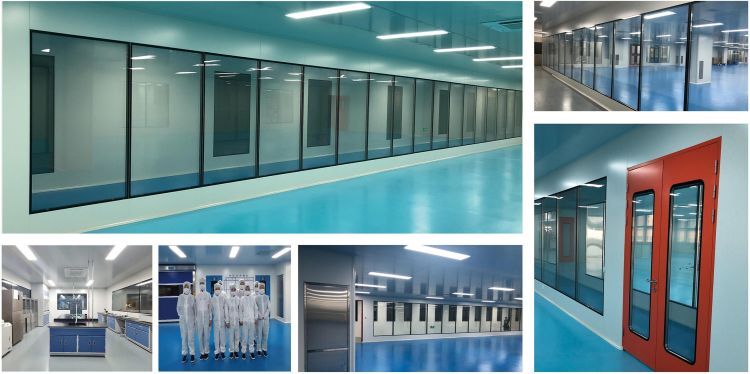Creating a Clean Room for Physics Laboratory: Design, Construction, and Certification
- 2024-01-04
- View 19
In physics research, it is essential to maintain a clean environment for conducting experiments accurately and reliably. A clean room is a controlled environment that is specially designed and constructed to reduce contamination levels to a minimum. In this article, we will discuss the importance of a clean room in a physics laboratory and the various elements that make up a clean room.

1、Clean room classification
Clean rooms are classified based on the number of particles per cubic meter of air. The International Organization for Standardization (ISO) and Federal Standard 209E are the two most commonly used standards for clean room classification. The ISO standard is based on the number of particles larger than 0.5 microns in a cubic meter of air, while the Federal Standard 209E is based on the number of particles larger than 0.3 microns in a cubic foot of air.
2、Design and construction of clean room
Clean rooms are designed and constructed to maintain positive pressure, which prevents outside contaminants from entering the room HEPA filters are used to remove particles from the air, and the walls, floor, and ceiling are constructed with materials that are easy to clean and maintain.
3、Clean room equipment and tools
Clean benches, fume hoods, and gowning rooms are some of the essential equipment found in a clean room. Clean benches provide a sterile workspace, while fume hoods prevent the escape of harmful gases. The gowning room is where researchers put on sterile clothing to prevent contamination from outside sources.
4、Clean room protocols and procedures
Personnel training is crucial in maintaining the cleanliness of a clean room. Researchers must wear clean room clothing and practice good hygiene habits. The clean room must be cleaned and maintained regularly to prevent the buildup of contaminants.
5、Clean room testing and certification
Clean rooms are periodically tested and certified to ensure they meet the required cleanliness standards. Particle count, air velocity, and pressure differentials are some of the parameters that are tested during certification.
6、FAQs
Q1. What is a clean room?
A. A clean room is a controlled environment that is specially designed and constructed to reduce contamination levels to a minimum.
Q2. Why is a clean room important in a physics laboratory?
A. A clean room is important in a physics laboratory as it provides a controlled environment for conducting experiments and ensures the accuracy and reliability of research results.
Q3. How are clean rooms classified?
A Clean rooms are classified based on the number of particles per cubic meter of air.
Q4. What equipment is found in a clean room?
A. Clean benches, fume hoods, and gowning rooms are some of the essential equipment found in a clean room.
Q5. How is a clean room tested and certified?
A. Clean rooms are periodically tested and certified to ensure they meet the required cleanliness standards. Particle count, air velocity, and pressure differentials are some of the parameters that are tested during certification.
7、Conclusion
In conclusion, a clean room is a critical component of any physics laboratory. It provides a controlled environment for conducting experiments and ensures the accuracy and reliability of research results. Clean rooms must be designed, constructed, and maintained to meet the required cleanliness standards. Personnel training and adherence to clean room protocols and procedures are also critical to maintaining the cleanliness of the room.
More of your interest
What You Can And Can't Bring To The Cleanroom
Antibacterial Fogging Is Necessary For Your Cleanroom
How Classification Impacts The Design Of A Cleanroom
Microelectronics Cleanroom Design
